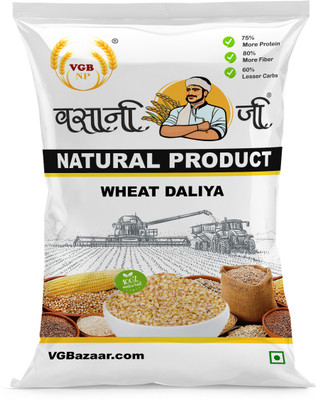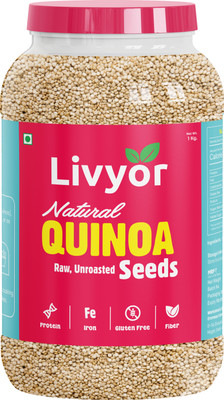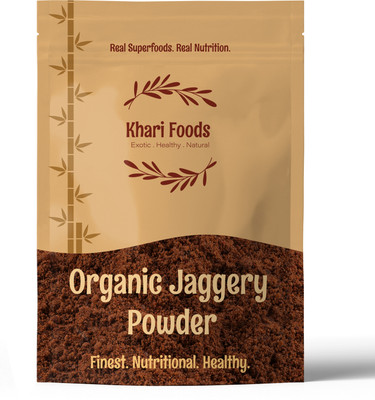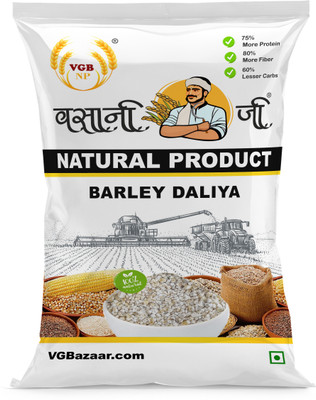
KINAAV FINGER MILLET/RAGI Finger Millet (1 kg)
Be the first to Review this product
Special price
₹189
₹799
76% off
@189/kg
Available offers
T&C
T&C
Delivery
Check
Enter pincode
Delivery by19 May, Monday|Free
?
View Details
Quantity
- 1 kg1 kg
Please select a Quantity to proceed
Services
- Cash on Delivery available?
Description
Ragi Health Benefits
Incorporating ragi into the diet can be a flavorful and healthful choice.
Weight Management
One of the most important ragi benefits is its ability to help lose weight. The dietary fibre in ragi provides a feeling of fullness, reducing excessive food consumption.
Ragi is most effective when enjoyed during your morning meal. The grain contains tryptophan, an amino acid that supports weight loss. It curbs appetite and reduces hunger, helping you manage your food intake.
Excellent Source of Proteins
Ragi is a rich source of protein. The high protein content of ragi helps prevent malnutrition. It holds a special protein, eleusinin, which can be easily incorporated into the body. Plus, it packs vital amino acids like tryptophan and methionine, which are deficient in most grains.
Tryptophan is used to make proteins. It also produces certain neurotransmitters (chemical messengers in the body).
Methionine makes proteins and other compounds in the body.
Methionine makes up 5% of the ragi’s protein content. This makes ragi a good source of protein, especially for vegetarians.
Helps Control Diabetes
Ragi’s seed coat boasts a wealth of polyphenols and dietary fibres compared to rice, maize, and wheat. Polyphenols are plant chemicals that slow the digestion process. The grain’s remarkable feature lies in its low glycemic index.
It effectively curbs food cravings and ensures gradual digestion. As a result, this helps maintain blood sugar levels within the recommended range.
Gluten-Free Alternative
Many individuals develop gluten intolerance, particularly to wheat found in common Indian dishes. Being naturally gluten-free, Ragi makes an excellent replacement for wheat in recipes like chapatis, dosas, and sweets.
This makes it a go-to choice, especially for those with celiac disease (a chronic digestive disorder triggered by an abnormal reaction to gluten). However, it is important to note that ragi is best consumed in the morning for optimal digestion due to its fibre-rich nature.
Nighttime consumption might not be suitable, especially for those with digestive issues or gluten allergies.
Prevents Anaemia
Iron deficiency anaemia is a common problem in India. It results in excessive fatigue and low productivity levels. But not with ragi! Its high iron content is one of the most important ragi or finger millet benefits.
It helps combat iron deficiency anaemia. Regular raagi dosa or roti consumption can help increase haemoglobin and overall energy levels.
Improves Bone Strength
Ragi is rich in calcium. As a result, it helps maintain strong and healthy bones. It is especially beneficial for individuals at risk of osteoporosis.
It also promotes bone development in growing children. Younger individuals can consume ragi daily. However, middle-aged and older adults should eat controlled portions to avoid gastrointestinal and kidney complications.
Prevents Skin Ageing and Hair Loss
Ragi stands as a natural skincare ally that helps with anti-ageing. The numerous ragi benefits for the skin include:
Protection against rashes
Wrinkles
Dull complexion
This happens due to essential amino acids, including methionine and lysine, in ragi. Both methionine and lysine are needed to make proteins not made by the body. You need to get them through the diet. Furthermore, the antioxidants in ragi combat bodily stress, effectively counteracting ageing. By revitalising skin cells, it bestows a fresh and vibrant appearance.
One of the most important ragi benefits for hair is preventing hair loss. Abundant in proteins, ragi can help promote healthier and stronger locks. Plus, it prevents premature greying of hair.
Enhances Nervous System Performance
Incorporating controlled portions of ragi into your daily diet aids in improving the conduction of nerve impulses. It stimulates memory centres in the brain and induces a calming effect on the mind.
This effect is attributed to the increased presence of the amino acid tryptophan. By regulating serotonin levels (a key neurotransmitter), ragi alleviates anxiety and insomnia concerns. The result? A positive mood and a restful sleep!
Increases Lactation
Next on the list of mandia benefits: Increased production of the mother’s milk. Consuming soaked ragi in the morning benefits pregnant and lactating women significantly.
Ragi’s abundant iron and calcium content helps boost milk production and ensures hormonal balance in expectant and new nursing moms.
Fulfills the Child’s Nutritional Needs
Ragi’s rich nutritional profile renders it an ideal choice for fulfilling the nutrient needs of growing children. In many parts of India, infants and young kids are often introduced to a ragi flour-based kanji or malt.
This is especially true during weaning (switching a baby’s diet from breast milk to other drinks and foods). Incorporating ragi malt or kanji into a child’s diet promotes wholesome growth and nourishes their young bodies.
Read More
Specifications
In The Box
| Pack of |
|
| Sales Package |
|
General
| Brand |
|
| Model Name |
|
| Type |
|
| Quantity |
|
| Maximum Shelf Life |
|
| Is Perishable |
|
| Organic |
|
| Dietary Preference |
|
| Polished |
|
| Container Type |
|
| Caloric Value |
|
| Regional Speciality |
|
| Manufactured By |
|
| Model Number |
|
| Nutrient Content |
|
| Net Quantity |
|
Additional Features
| Storage Instructions |
|
| Certification |
|
Dimensions
| Height |
|
| Width |
|
| Depth |
|
| Weight |
|
Legal Disclaimer
|
Be the first to ask about this product
Safe and Secure Payments.Easy returns.100% Authentic products.
Back to top




